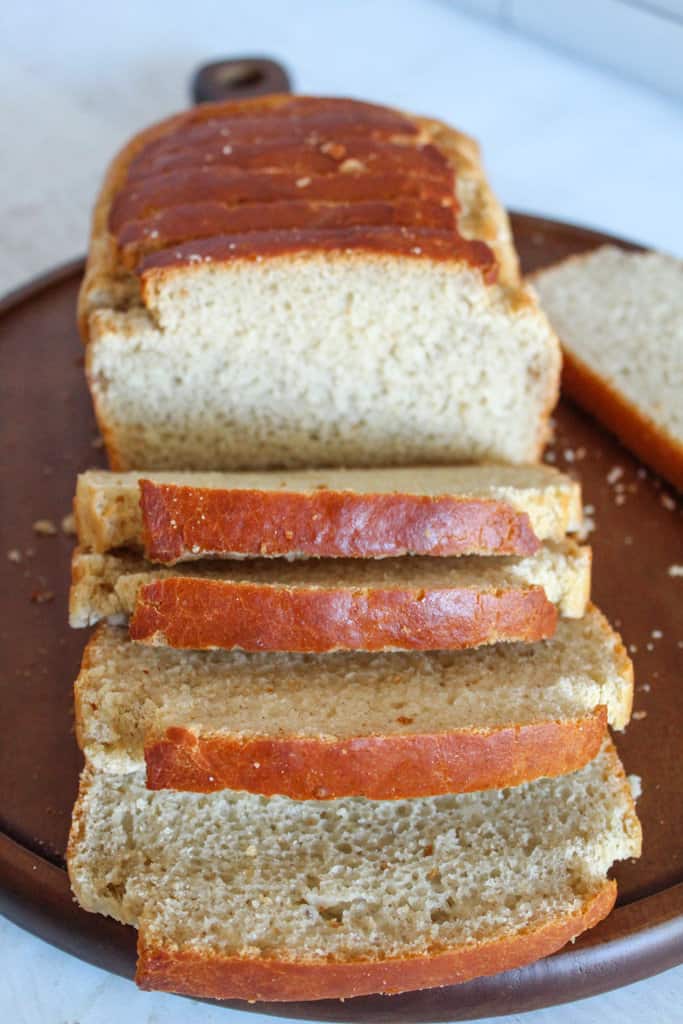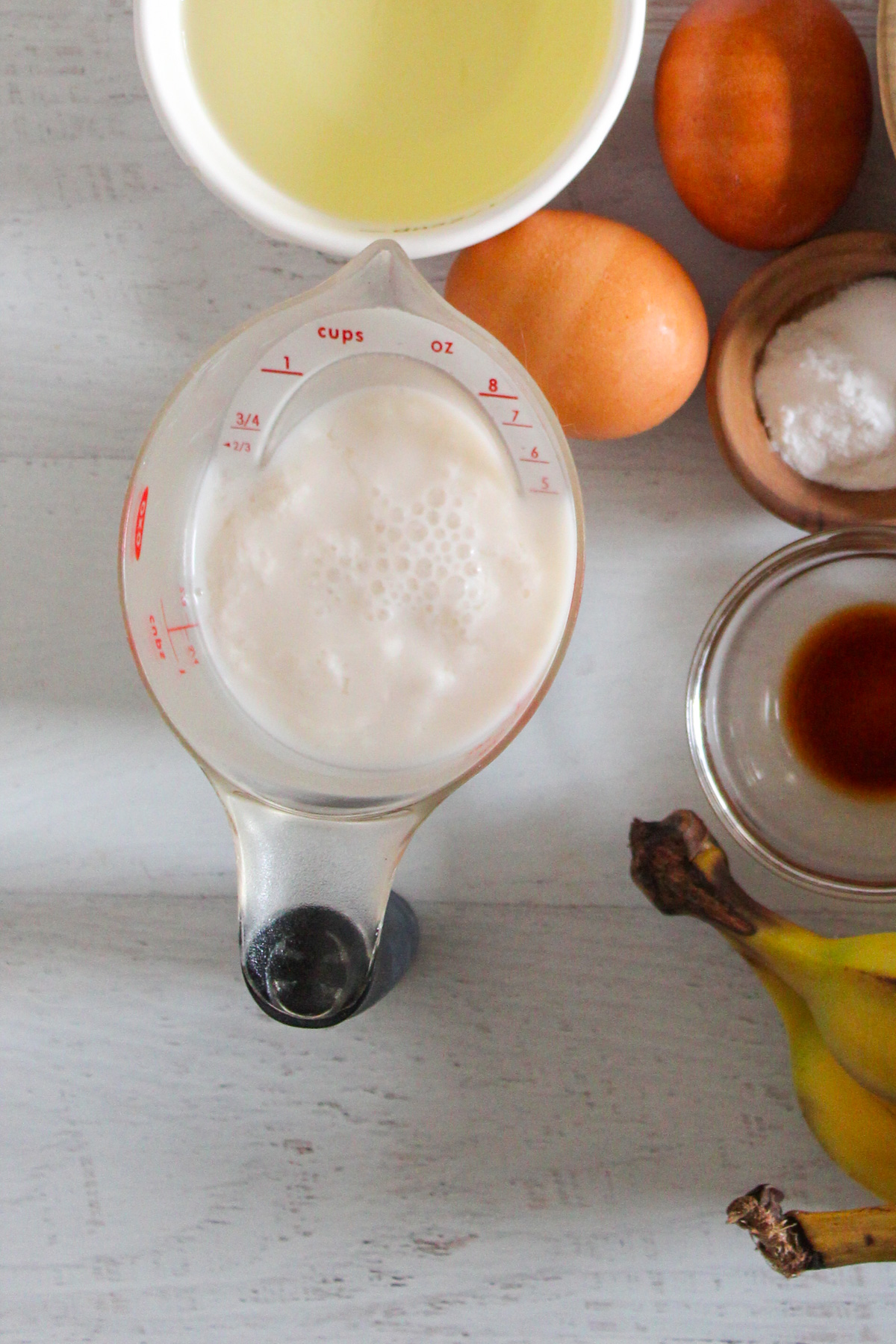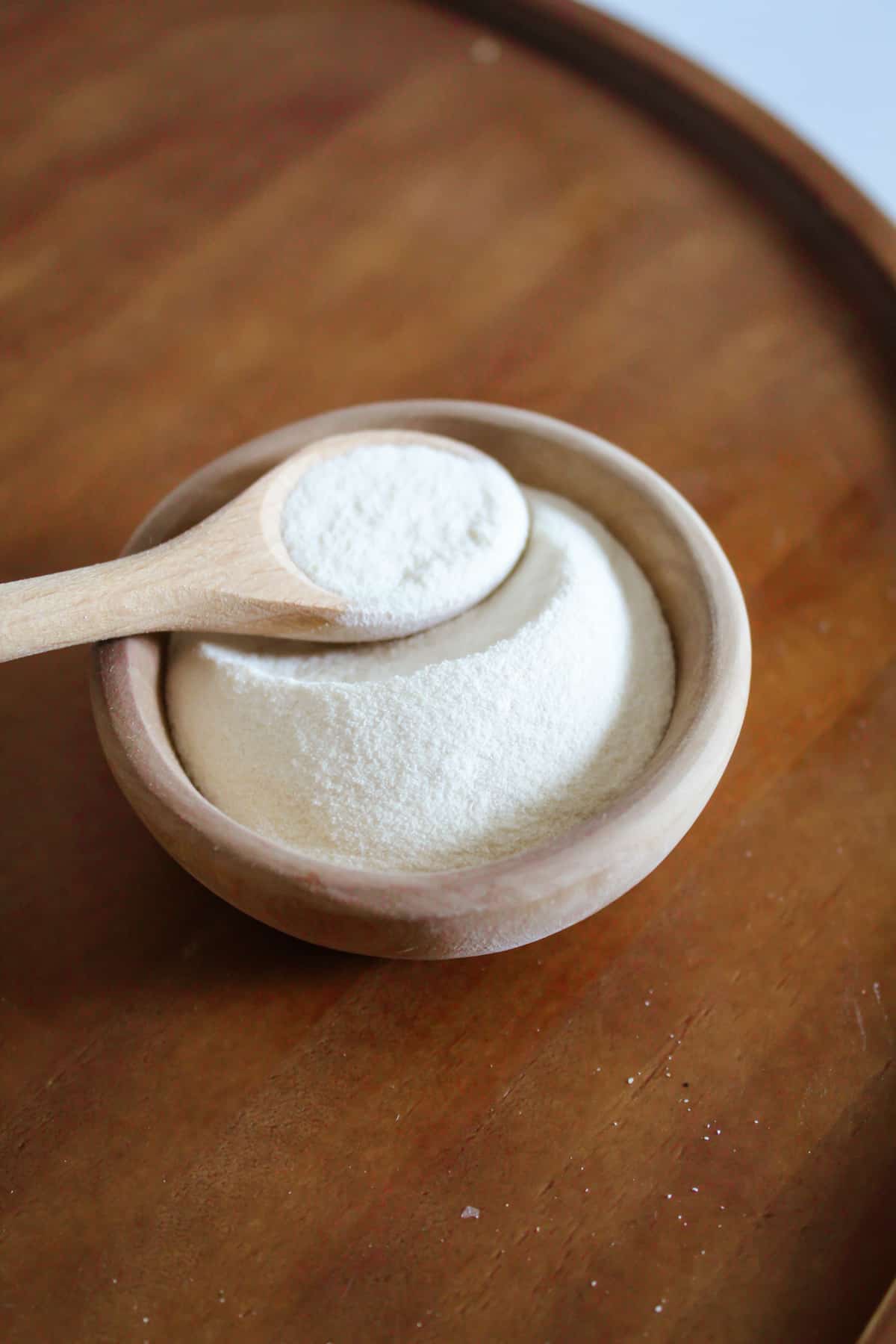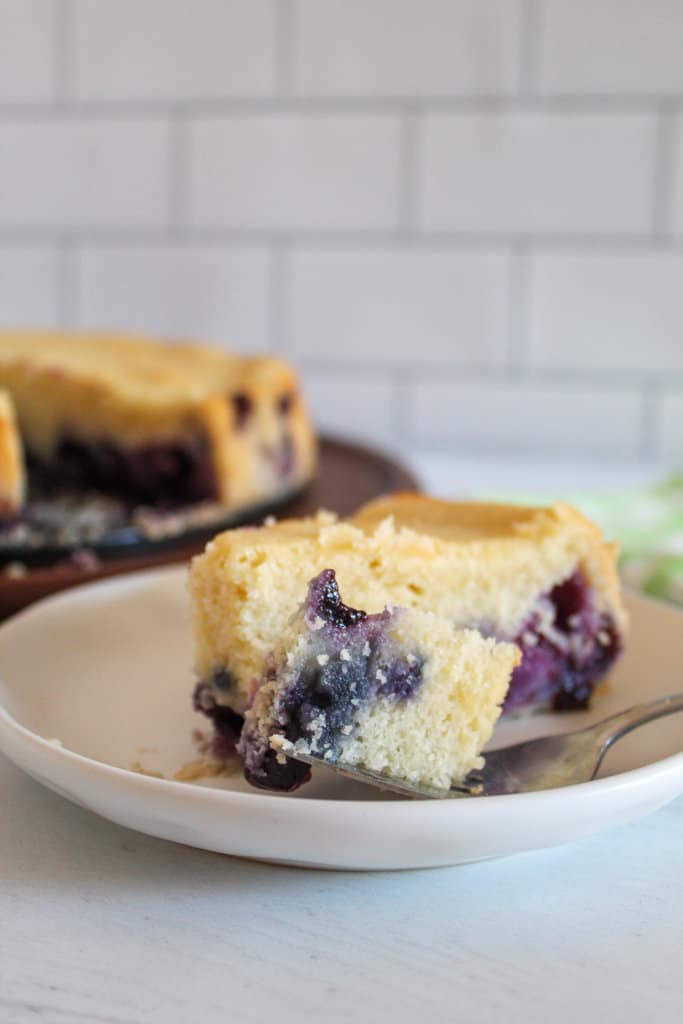Best Agave Syrup Alternatives for Gluten-Free Baking
Agave syrup is a popular liquid sweetener, but if you’re all out or can’t use it, that’s not a problem. There are plenty of great agave syrup alternatives to choose from, including some you likely already have in your pantry!
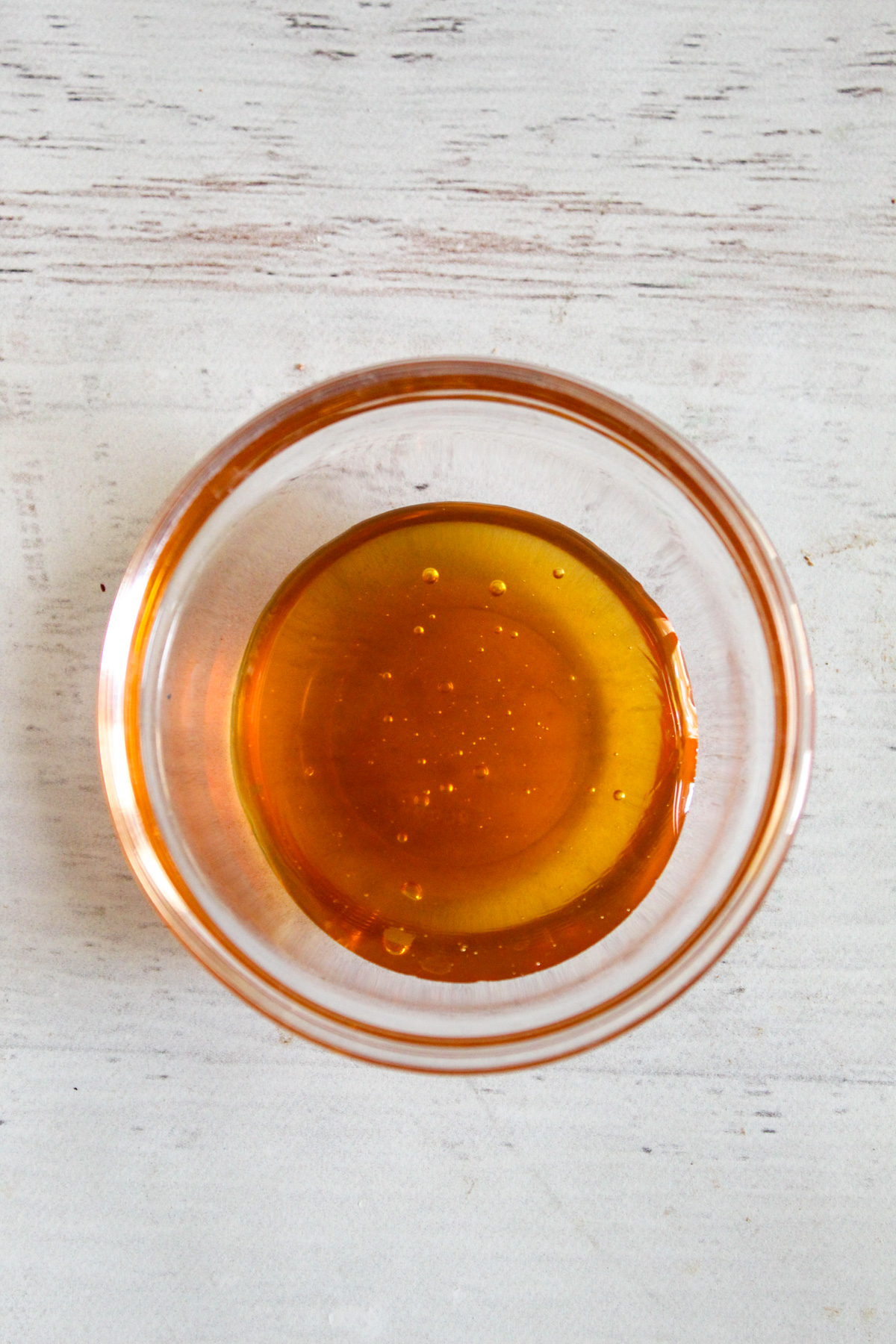
I’ve been using agave syrup for a few years. I love that it’s a natural sweetener with a lower glycemic rating, making it ideal for breakfast recipes, like these Apple Quinoa Muffins.
Table of Contents
However, many of my gluten-free readers are unable to consume it to due to issues with fructose malabsorption. Up to 10% of people with celiac disease struggle to digest fructose from honey, agave, fresh fruits, and more.
Whether you need to avoid agave for health issues or are out, you’re in luck! You can typically substitute liquid sweeteners interchangeably in a recipe, although you will need to account for the flavor, color, and nutritional needs. Let’s break it down to help you find the perfect swap for your budget and needs.
Looking for more resources on gluten free baking? Learn about the best coconut sugar substitutes or my favorite vegan egg substitutes.
Agave Syrup Alternative: Key Takeaways
Agave syrup is a popular vegan-friendly sweetener, prized for its low glycemic rating and sweet flavor.
In general, it can be replaced with almost any other liquid sweetener when baking since the moisture content will be the same. However, other sweeteners won’t be quite as sweet.
Granulated sweeteners, like regular sugar, can work, but you will need to adjust the amount of liquid in the recipe. This isn’t always easy to do and can be hit-or-miss.
Best Substitutes: Honey or maple syrup
Low GI Substitutes: Coconut Nectar or allulose
Other liquid sweeteners: Date syrup, brown rice syrup, simple syrup, golden syrup, corn syrup
What is Agave Syrup?
Agave syrup, or agave nectar, is traditionally made by collecting the sweet liquid from agave plants. The liquid is then heated and cooked down into a thick, sweet syrup, similar to making maple syrup. There is also a newer way to make the syrup without heat using mold-derived enzymes. Both methods are naturally gluten-free.
There are different types, including light and amber agave, and syrups from the blue agave plant are considered the best.
From a flavor perspective, agave syrup has a mild, neutral flavor and is thick and viscous like honey or corn syrup. However, it is actually sweeter than regular sugar, so you can use less to get the same amount of sweetness.
One of the main reasons why this liquid sweetener is so popular is its low glycemic rating. Compared to white sugar, which has a glycemic index of 63, agave syrup generally rates around 10-27.
This is due to the low glucose content, however agave syrup is notoriously high in fructose. This means it does not raise blood sugar levels as quickly other sweeteners, but overconsuming fructose can steal lead to a range of health issues, including obesity, high cholesterol, heart disease, and more.
Add in the fact that people with celiac disease are ten times more likely to have problems with fructose , and you can quickly understand why this sweetener is often substituted in recipes!

Best Substitutes for Agave Syrup
Fortunately, you can almost always substitute agave nectar with other liquid sweeteners. They will act essentially the same in different recipes, offering just the right amount of liquid to keep the ratio of your recipe stable. Each one has a different GI rating, flavor, color, and nutritional makeup, which you will want to keep in mind as well.
I don’t recommend substituting regular white or brown sugar for agave syrup, since they are dry sweeteners. If you don’t adjust the amount of liquid in the recipe, your cakes and cookies will end up very dry and crumbly. To keep it simple, use a liquid sweetener or plan on adjusting the liquid content in your recipe.
1. Pure Maple Syrup
Made by tapping and cooking down the sap from maple trees, maple syrup is produced very similarly to sweet agave nectar and adds its own unique flavor profile.
Since maple syrup is slightly less viscous than agave syrup, it may not drizzle or cling to foods in the same way, but is generally interchangeable when baking.
However, maple syrup has a glycemic load of 54, which may be significantly higher than some brands of agave nectar.
2. Raw Honey
Agave syrup is by far one of the best substitutes for honey, and vice versa. It has a similar color, viscosity, and sweetness level, which makes it an ideal replacement.
Similar to maple syrup, it has a glycemic load of 58, so it is not always appropriate for people who need to manage their sugar intake.
3. Coconut Nectar
This thick syrup is made by cooking down the liquid from coconut palm flowers and is known for being a good source of vitamins, minerals, and amino acids.
It has a similar flavor to honey or maple syrup, but is often much harder (and more expensive to find). However, coconut nectar has a GI rating of 35. With a low GI rating, similar flavor profile, and consistency, it’s one of the best agave syrup substitutes available.
4. Date Syrup
Made by cooking down dates in water to create a thick, sweet syrup, date syrup is an increasingly popular sweetener. It has a rich, caramel-like flavor that can enhance any recipe.
With a GI rating of between 47-54, it is also considered a low GI sweetener.
It can be used in place of agave nectar in many recipes, including granola bars, salad dressings, cookies, and more, but keep in mind that it may have a stronger flavor and darker color.
5. Brown Rice Syrup
This sweetener is popular in the running community where people need as much glucose as possible to fuel their muscles during long runs. You’ll often find it in energy bars or other snacks to offer an instant burst of energy.
Although brown rice syrup is a thick, viscous sweetener, it tends to be much less sweet than standard sugar or agave nectar, meaning you will need more, and it has a very high GI rating of 98. This means it will spike your blood sugar quickly, which is a problem for most people.
6. Corn Syrup
Corn syrup is a controversial sweetener in many communities, particularly high-fructose corn syrup (HFCS).
Just like agave syrup, the high fructose content can lead to a suit of health issues. It is also high in glucose, which gives it a high GI rating of 75.
However if you’re in the middle of a recipe, many of us have light corn syrup on hand. It’s a key ingredient in pecan pies and other desserts, and can work as an agave syrup substitute in a pinch.
7. Golden Syrup
Depending on where you live, you may have access to golden syrup or treacle syrup in your local grocery stores. These sweeteners are more common in the UK, Canada, and Australia, where they are generally used instead of corn syrup.
They’re thick and sweet with a golden or amber color and key in many traditional desserts, like sticky toffee pudding. It’s not quite as sweet as traditional table sugar, and has a GI rating of around 60.
If you have some on hand, it will work well in your gluten-free bakes, but might not offer quite the same level of sweetness.
Black treacle and molasses tend to fit in this same category, although their dark color and rich, mineral-heavy flavor can completely change the flavor profile of your homemade granola or cookies. They are not generally considered a good substitute for agave sweetener.
8. Allulose
There are some liquid artificial sweeteners that can stand in for agave syrup, as well. Allulose has a GI rating of 0, which makes it a good option for people who need to keep their blood sugar under control at all times.
It usually comes from sugar beets or corn and is naturally gluten-free. Although allulose is not quite as sweet as table sugar, it is an excellent substitute for most liquid sweeteners and can be used interchangeably in most recipes.
Unfortunately, some people can be sensitive to it and experience digestive issues after consuming allulose. It’s best to use it in small quantities, at least until you understand how your body will handle it.
9. Simple Syrup
Simple syrups are made with equal parts water and sugar. Since they use standard table sugar, they have a much higher GI than most natural sweeteners, although the flavor and sweetness is very similar. Best of all, you can make them quickly at home using ordinary ingredients.
For an even thicker syrup, use two parts of sugar to water (called a “rich syrup“). This special syrup acts more like honey or agave syrup in recipes, although it is even sweeter.
If you try to avoid regular white sugar, you can also make simple syrups with brown sugar or coconut sugar. These syrups do turn out very dark with a rich flavor, which may not work in recipes that require a more neutral flavor.
To make your own agave substitute with sugar, heat 1 cup of water and 1.5 cups of sugar in a pan until the sugar crystals dissolve. The syrup will have approximately the same sweetness as agave syrup and can be used interchangeably.
